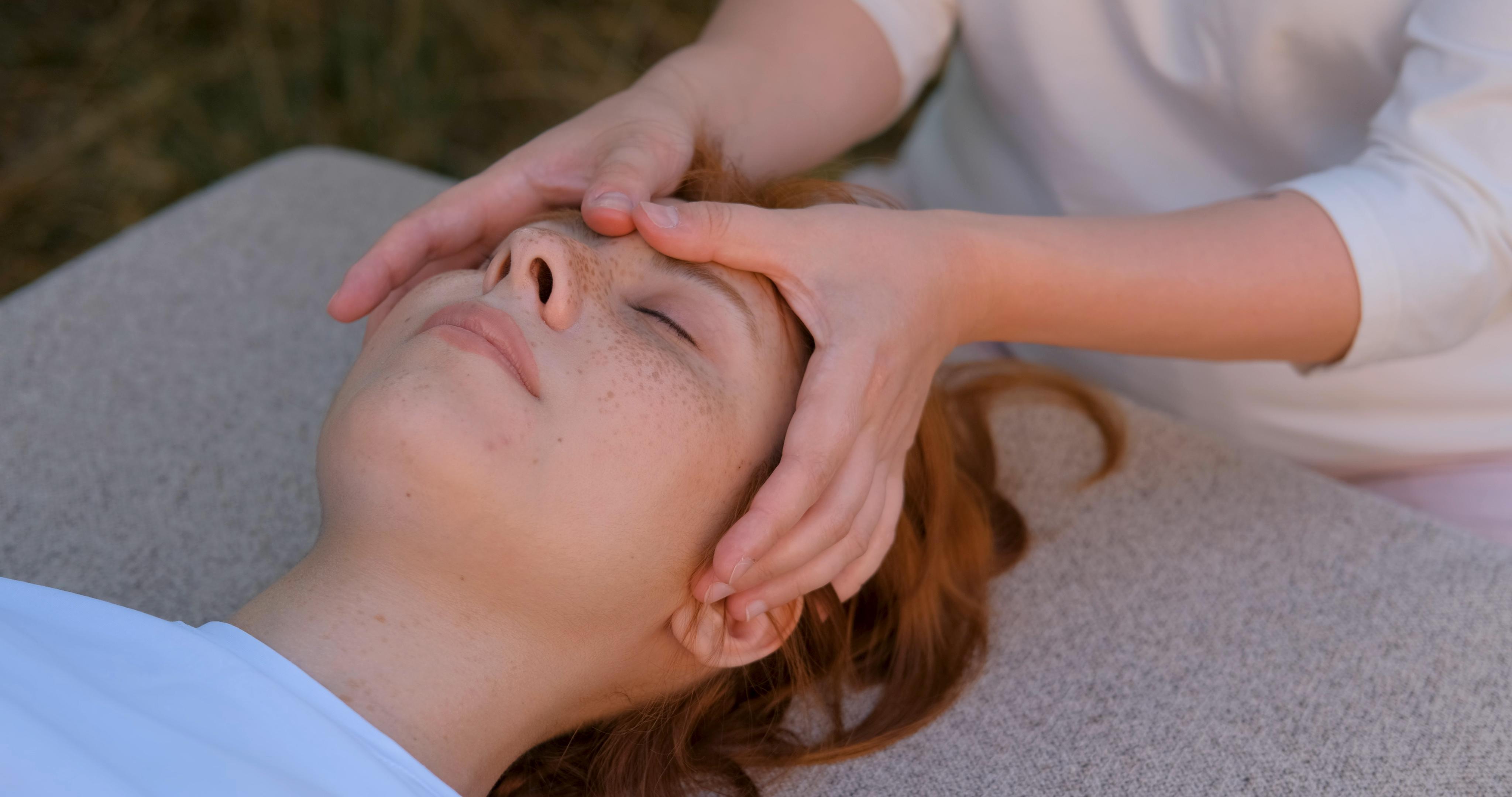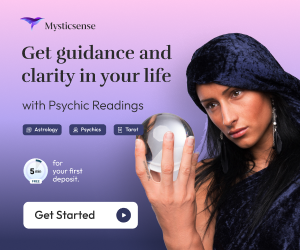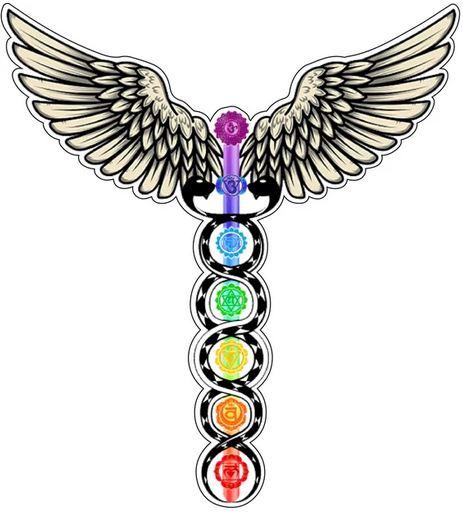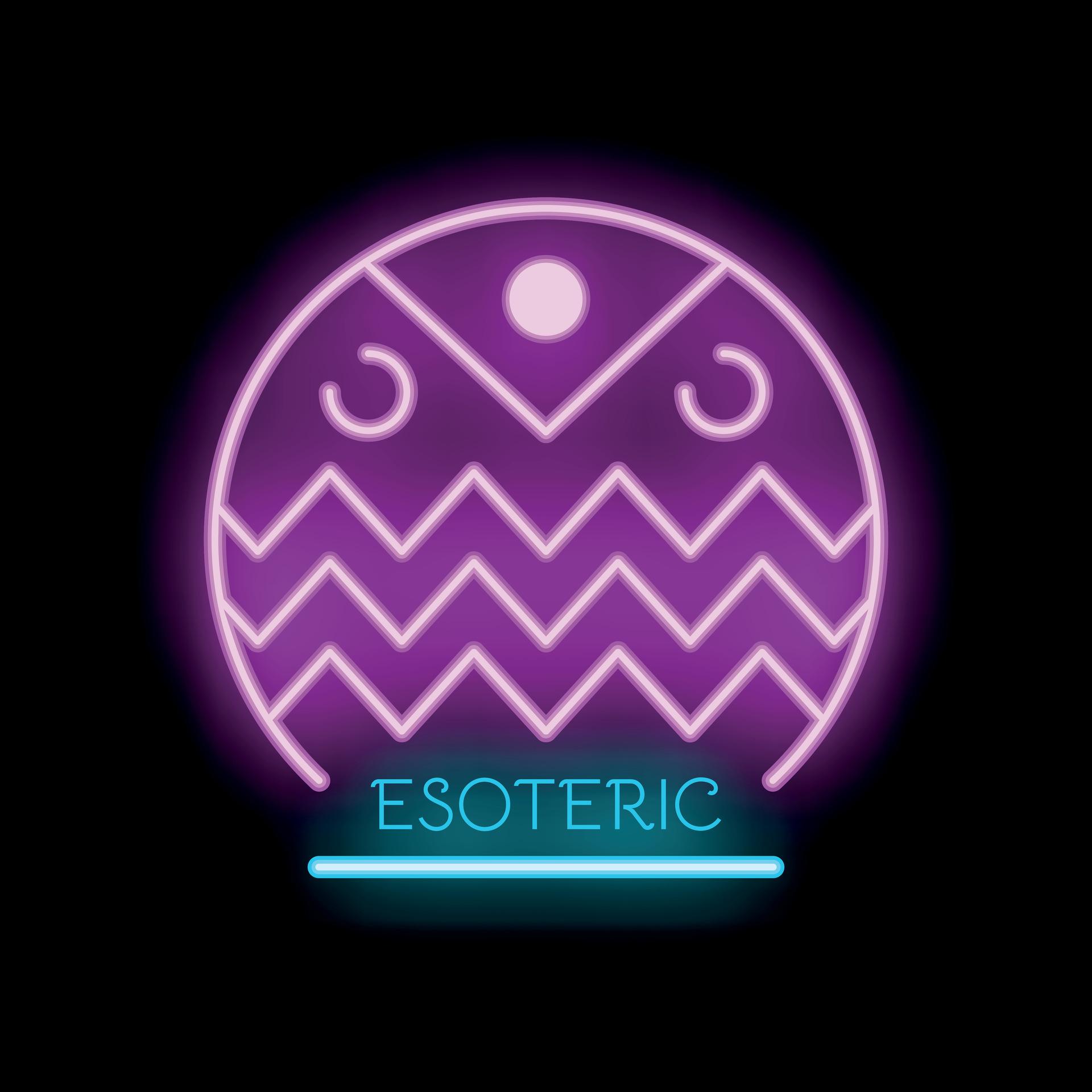Reiki: Embark on a Journey to Wholeness and Well-Being
Welcome to the world of Reiki healing, a holistic, light-touch energy healing practice that originated in Japan in the early 20th century.
This ancient art promotes holistic wellness by balancing the body, mind, and spirit, leading to overall well-being and spiritual growth.

As you embark on this journey, you'll discover how Reiki healing can transform your life by promoting harmony and inner peace.
Key Takeaways
- Reiki is a holistic, light-touch energy healing practice.
- It promotes balance, harmony, and inner peace.
- Reiki is beneficial for overall wellness and spiritual growth.
- It originated in Japan in the early 20th century.
- Reiki can transform your life by promoting well-being.
The Ancient Art of Reiki: Origins and History
Reiki, a holistic healing practice, has its roots deeply embedded in early 20th-century Japan. This ancient art form is centered around the concept of channeling and balancing the body's energy to promote well-being and harmony.
The Birth of Reiki in Japan
Reiki was born in Japan during a time when traditional healing practices were being revisited and reevaluated. It was in this cultural context that Dr. Mikao Usui developed Reiki, drawing upon ancient techniques and philosophies.
Dr. Mikao Usui and the Development of Modern Reiki
Dr. Usui's journey to develop Reiki began with a profound spiritual experience on Mount Kurama, where he received a divine revelation. This experience not only guided him in creating the Reiki system but also instilled in him a deep understanding of the mind-body-spirit connection. As Dr. Usui continued to refine Reiki, he emphasized the importance of energy healing in achieving balance and harmony within oneself.
"The most precious thing in the universe is not knowledge, but wisdom. Wisdom is the ability to use knowledge to improve one's life and the lives of others."
How Reiki Spread to the Western World
Reiki's journey to the Western world was facilitated by its simplicity and the universal appeal of its principles. As people from various cultures began to embrace Reiki, it evolved into a global phenomenon, with practitioners adapting its techniques to suit their local contexts. Today, Reiki is recognized worldwide as a valuable modality for reiki healing and overall wellness.
The spread of Reiki to the West marked a significant milestone in its history, as it began to be integrated into various health and wellness practices. This integration underscored the growing recognition of the importance of energy healing in modern healthcare.
Understanding the Fundamentals of Energy Healing
Understanding the fundamentals of energy healing is crucial for appreciating its benefits in modern wellness practices. Energy healing is based on the principle that a universal life force energy flows through all living beings, nourishing and sustaining our physical, emotional, and spiritual well-being.
The Concept of Universal Life Force Energy
The concept of Universal Life Force Energy is central to energy healing practices. This energy is believed to be omnipresent, flowing through every living thing, and is essential for maintaining health and vitality. In Reiki, this energy is known as "Ki" or "Chi," and practitioners believe that by channeling and balancing this energy, they can promote healing and well-being.
How Energy Flows Through the Human Body
Energy flows through the human body via a complex network of pathways, often referred to as meridians or chakras. When this energy flows freely, the body is in a state of balance and harmony. However, when the flow is disrupted, it can lead to physical, emotional, or spiritual distress. Reiki practitioners work to restore the natural flow of energy, promoting relaxation, reducing stress, and enhancing overall well-being.
Blockages and Imbalances: The Root of Disharmony
Blockages and imbalances in the energy flow are believed to be the root cause of various health issues. These blockages can result from stress, trauma, or negative emotions. By identifying and addressing these imbalances, energy healing practices like Reiki can help restore the body's natural equilibrium, leading to improved health and vitality.
The Five Reiki Principles for Daily Living
The Five Reiki Principles serve as a foundation for cultivating a more balanced and compassionate approach to living. These principles, developed by Dr. Mikao Usui, offer a guiding philosophy for achieving harmony and balance in daily life.
By embracing these principles, individuals can foster a stronger mind-body-spirit connection, leading to greater overall wellness and spiritual growth.
Just for Today, Do Not Anger
Letting go of anger is the first step towards healing and inner peace. By choosing not to anger, we release negative energy and cultivate a more peaceful state of being.
This principle encourages us to be mindful of our reactions and to approach challenges with a calm and centered mindset.
Just for Today, Do Not Worry
Worry is a significant obstacle to inner peace. By letting go of worry, we can reduce stress and anxiety, creating space for more positive and uplifting experiences.
Focusing on the present moment allows us to release concerns about the future or past, embracing a more serene and worry-free existence.
Honor Your Parents, Teachers, and Elders
Showing respect and gratitude to those who have come before us is a powerful way to cultivate humility and appreciation. This principle encourages us to honor the wisdom and experience of our elders.
By doing so, we not only strengthen our connections with others but also acknowledge the value of their guidance and support.
Earn Your Living Honestly
Earning a living with integrity is essential for building trust and respect, both for ourselves and in our relationships with others. This principle promotes ethical behavior and responsibility.
By living honestly, we contribute to a more just and equitable society, fostering a sense of community and cooperation.
Show Gratitude to Every Living Thing
Cultivating gratitude is a powerful practice that can transform our lives. By appreciating the interconnectedness of all living things, we can deepen our sense of connection to the world around us.
This principle encourages us to recognize and honor the beauty and wonder that exists in every moment, fostering a more positive and compassionate outlook.
Embrace the Magic of Reiki: A Journey to Inner Peace and Balance
The practice of Reiki offers a profound path to inner peace, allowing individuals to find balance amidst the chaos of modern life. As we navigate the complexities of our daily existence, Reiki serves as a powerful tool for cultivating a deeper sense of calm and well-being.

Connecting with Your Inner Self Through Reiki
Reiki facilitates a profound connection with our inner selves, enabling us to tap into our inner wisdom and intuition. Through regular Reiki practice, individuals can develop a greater awareness of their thoughts, emotions, and behaviors, leading to a more authentic and fulfilling life.
By fostering this inner connection, Reiki empowers individuals to make positive changes in their lives, promoting personal growth and self-awareness. As we become more attuned to our inner selves, we are better equipped to navigate life's challenges with grace and resilience.
Finding Equilibrium in a Chaotic World
In today's fast-paced world, finding balance can be a daunting task. Reiki offers a solution by teaching individuals how to harmonize their energy and calm their minds. Through Reiki, we can learn to respond to life's challenges more mindfully, rather than react impulsively.
| Benefits of Reiki | Description |
|---|---|
| Reduces Stress | Reiki helps to calm the mind and body, reducing stress and anxiety. |
| Promotes Balance | By harmonizing the body's energy, Reiki promotes balance and well-being. |
| Enhances Self-Awareness | Reiki practice fosters a deeper understanding of oneself, leading to personal growth. |
Cultivating Mindfulness and Presence
Reiki encourages individuals to be present in the moment, cultivating mindfulness and a deeper appreciation for life. By focusing on the present, we can let go of worries about the past or future, embracing the beauty of the here and now.
Mindfulness, when combined with Reiki, can lead to a more profound sense of inner peace and contentment. As we practice Reiki, we become more aware of our surroundings and the interconnectedness of all things, fostering a sense of unity and compassion.
The Healing Benefits of Regular Reiki Practice
The benefits of Reiki healing are multifaceted, impacting physical, emotional, and mental well-being. Regular Reiki practice can lead to a significant improvement in overall health and quality of life.
Physical Healing and Pain Relief
Reiki has been shown to be effective in reducing pain and promoting physical healing. By channeling and balancing the body's energy, Reiki can help alleviate symptoms associated with various physical conditions. Pain relief is one of the most commonly reported benefits, making Reiki a valuable complementary therapy for individuals dealing with chronic pain.
Emotional Healing and Stress Reduction
Emotional healing is another significant benefit of Reiki. This practice helps in reducing stress and anxiety by promoting relaxation and calming the mind. Regular Reiki sessions can lead to improved emotional balance and resilience, enabling individuals to better cope with life's challenges.
Mental Clarity and Enhanced Cognitive Function
Reiki also positively impacts mental clarity and cognitive function. By clearing energy blockages, Reiki can enhance mental focus and improve overall cognitive performance. This makes it an attractive practice for individuals seeking to improve their productivity and mental acuity.
Spiritual Growth and Enlightenment
On a spiritual level, Reiki facilitates personal growth and enlightenment. It helps individuals connect with their inner selves, promoting a deeper understanding of their purpose and place in the world. Regular practice can lead to a greater sense of inner peace and harmony.
The benefits of regular Reiki practice are supported by both anecdotal evidence and scientific research. Some of the key advantages include:
- Reduced stress and anxiety
- Improved pain management
- Enhanced mental clarity and focus
- Promoted emotional healing and balance
- Supported spiritual growth and self-awareness
By incorporating Reiki into their wellness routine, individuals can experience these benefits firsthand, leading to a more balanced and fulfilling life.
The Chakra System and Reiki: Balancing Your Energy Centers
Understanding the chakra system is essential for harnessing the full potential of Reiki in healing and personal growth. The chakra system provides a framework for comprehending the flow of energy through the body, and Reiki practitioners often work with this system to restore balance and promote well-being.
Understanding the Seven Major Chakras
The human body has seven major chakras that govern various aspects of our being, from physical health to spiritual awareness. These energy centers are the Root, Sacral, Solar Plexus, Heart, Throat, Third Eye, and Crown Chakras. Each chakra is associated with specific qualities, emotions, and aspects of our lives, and when balanced, they contribute to our overall well-being.
Signs of Chakra Imbalance
Imbalances in the chakras can manifest in various ways, including physical symptoms, emotional turmoil, and spiritual disconnection. For instance, a blocked Heart Chakra might lead to difficulties in forming healthy relationships, while an imbalance in the Solar Plexus Chakra could result in low self-esteem or a lack of confidence.
How Reiki Addresses Specific Chakra Issues
Reiki is a powerful modality for addressing chakra imbalances. By channeling universal life force energy, Reiki practitioners can help clear blockages and restore the natural flow of energy through the chakras. For example, Reiki can be used to calm an overactive Throat Chakra or to energize an underactive Root Chakra, promoting balance and harmony throughout the energy system.
A Reiki practitioner can tailor the treatment to focus on specific chakras, using techniques such as hand positions and symbols to enhance the flow of energy. This targeted approach allows for a more effective healing process, addressing the root causes of imbalance and promoting overall well-being.
What to Expect During a Reiki Session
For those new to Reiki, a typical session is a unique and potentially transformative experience that combines energy healing with relaxation. Reiki is a form of energy healing that involves the transfer of universal life force energy through the hands of a Reiki practitioner.
Preparing for Your First Reiki Treatment
Before your first Reiki session, it's helpful to understand that you will remain fully clothed and lie on a treatment table. You might be asked to state your intentions or areas of concern, allowing the Reiki practitioner to tailor the session to your needs.
The Reiki Practitioner's Role
The Reiki practitioner acts as a conduit for the universal life force energy. Their role is to facilitate the flow of energy by placing their hands on or above specific positions on the body. This process is believed to promote Reiki healing by clearing blockages and restoring balance to the body's energy.
Common Sensations and Experiences
During a Reiki session, you may experience a range of sensations, including warmth, tingling, or deep relaxation. Some people also report visualizations or emotional releases. Incorporating self-care rituals like Reiki into your routine can enhance overall well-being and promote a sense of calm.
By understanding what to expect during a Reiki session, you can better appreciate the potential benefits of this holistic healing modality. Whether you're seeking relaxation, pain relief, or spiritual growth, Reiki offers a powerful tool for achieving your wellness goals.
Becoming a Reiki Practitioner: Levels of Training
Embarking on a journey to become a Reiki practitioner involves several levels of training, each designed to deepen your understanding and practice of this ancient healing art. As you progress through these levels, you'll not only enhance your ability to heal others but also foster your own spiritual growth.
Reiki Level 1: Self-Healing and Fundamentals
The first level of Reiki training focuses on self-healing and introduces the fundamental principles of Reiki. Students learn how to channel Reiki energy and apply it to themselves and others. This level lays the groundwork for further training and personal development.
Reiki Level 2: Distance Healing and Symbols
In Reiki Level 2, practitioners are taught distance healing techniques and introduced to sacred symbols that enhance the flow of Reiki energy. This level expands your capacity to heal others across different distances and deepens your understanding of Reiki's application.
Reiki Level 3: Advanced Techniques
Reiki Level 3 is an advanced training phase that refines your skills and introduces more complex techniques. It's designed for those committed to deepening their practice and understanding of Reiki.
Reiki Master: Teaching and Attunement
The Reiki Master level is the highest training level, where individuals learn to teach and attune others to Reiki. This level requires a significant commitment to the practice and a deep understanding of Reiki principles and techniques.
Throughout these levels, Reiki training not only equips you with healing skills but also promotes personal and spiritual development. By understanding the different levels of training, you can make informed decisions about your Reiki education and embark on a fulfilling journey as a Reiki practitioner.

- Reiki Level 1 focuses on self-healing and the basics of Reiki.
- Reiki Level 2 introduces distance healing and sacred symbols.
- Reiki Level 3 refines your skills with advanced techniques.
- Reiki Master level enables you to teach and attune others.
Becoming a Reiki practitioner is a journey that requires dedication and an open heart. As you progress through the levels, you'll find that Reiki becomes an integral part of your life, enhancing your well-being and your ability to support others on their healing paths.
Integrating Reiki into Your Daily Wellness Routine
By integrating Reiki into your daily life, you can experience profound effects on your overall well-being. Incorporating this ancient practice into your daily routine can lead to a more balanced and harmonious life.
Morning Reiki Self-Treatment Practices
Starting your day with a Reiki self-treatment can set a positive tone and enhance your mental clarity. Simply place your hands on different parts of your body, allowing the universal life force energy to flow through you. This practice can help you feel more grounded and prepared for the day ahead.
Combining Reiki with Meditation and Mindfulness
Reiki can be a powerful complement to meditation and mindfulness practices. By combining these practices, you can deepen your state of relaxation and inner peace. Use Reiki symbols during meditation to enhance your focus and connection to the present moment.
Reiki for Spaces and Objects
Reiki is not limited to personal healing; it can also be used to bless and energize spaces and objects. By using Reiki on your living and work areas, you can create a more harmonious environment. This can lead to improved productivity and a sense of calm.
Creating Sacred Self-Care Rituals with Reiki
Incorporating Reiki into your self-care rituals can elevate your practice and provide a deeper sense of relaxation. Use Reiki during activities like bathing, journaling, or yoga to enhance their benefits. By doing so, you can create a more nurturing and restorative self-care routine.
Conclusion: Embracing the Transformative Power of Reiki
Reiki healing offers a powerful approach to promoting overall wellness and spiritual growth. By embracing the principles and practices of Reiki, individuals can cultivate a deeper mind-body-spirit connection, leading to greater balance, harmony, and inner peace.
As you continue on your Reiki journey, you may find that it brings numerous benefits to your daily life, from reduced stress and anxiety to increased mental clarity and emotional well-being. By integrating Reiki into your self-care routine, you can experience profound spiritual growth and a deeper understanding of yourself and the world around you.
The mind-body-spirit connection is at the heart of Reiki, and by nurturing this connection, you can unlock your full potential and live a more authentic, meaningful life. We encourage you to continue exploring the world of Reiki and discover its many benefits for yourself.
FAQ
What is Reiki and how does it work?
Reiki is a holistic, light-touch energy healing practice that originated in Japan in the early 20th century. It works by channeling Universal Life Force Energy through the hands to promote balance, harmony, and inner peace.
What are the benefits of regular Reiki practice?
Regular Reiki practice offers a wide range of benefits, including physical healing and pain relief, emotional healing and stress reduction, mental clarity and enhanced cognitive function, and spiritual growth and enlightenment.
How can Reiki be used for chakra balancing?
Reiki can be used to balance the seven major chakras by addressing specific energy blockages and imbalances. By restoring the natural flow of energy, Reiki promotes harmony and balance throughout the energy system.
What can I expect during a Reiki session?
During a Reiki session, you can expect a trained practitioner to use a series of hand positions to channel energy to specific areas of the body. You may experience sensations such as heat, cold, or tingling, and may feel a deep sense of relaxation and calm.
How can I integrate Reiki into my daily wellness routine?
You can integrate Reiki into your daily wellness routine by practicing morning self-treatment, combining Reiki with meditation and mindfulness, using Reiki to bless spaces and objects, and creating sacred self-care rituals.
What are the different levels of Reiki training?
The different levels of Reiki training include Reiki Level 1: Self-Healing and Fundamentals, Reiki Level 2: Distance Healing and Symbols, Reiki Level 3: Advanced Techniques, and Reiki Master: Teaching and Attunement.
Can Reiki be used for distance healing?
Yes, Reiki can be used for distance healing. Reiki Level 2 training includes the use of symbols and techniques for distance healing, allowing practitioners to send energy to individuals or locations remotely.
Is Reiki a replacement for medical treatment?
No, Reiki is not a replacement for medical treatment. While Reiki can be used to promote overall wellness and support the healing process, it should be used in conjunction with, not in place of, medical treatment.
Links:




